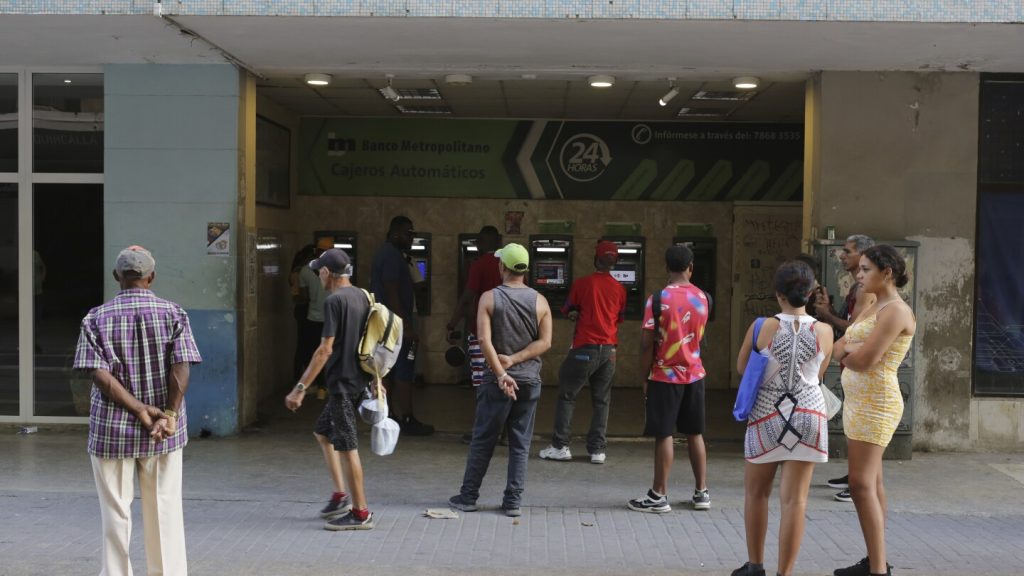The economic crisis in Cuba has led to a shortage of cash, causing frustration among the population. Long queues outside banks and ATMs have become a common sight in Havana and beyond, as people struggle to access the money they need for daily transactions. The shortage is attributed to various factors, including the government’s fiscal deficit, high inflation, and the hoarding of cash by entrepreneurs and small business owners.
Experts point out that the cash shortage is exacerbated by the fact that much of the money in circulation is held outside of the banking system. Entrepreneurs and small business owners often hoard Cuban pesos in order to convert them into foreign currency on the informal market. This practice has led to a situation where the majority of cash is in the hands of individuals rather than in banks, creating a scarcity of physical currency for everyday transactions.
The complexity of Cuba’s monetary system, which includes multiple currencies and fluctuating exchange rates, adds to the challenges faced by the population. The government’s introduction of a virtual currency, MLC, in 2019 aimed to address some of these issues, but the measures have not been entirely successful. In 2023, the government mandated the use of credit cards for certain transactions, but many businesses remain reluctant to accept electronic payments.
High inflation further complicates the situation, making it increasingly difficult for people to afford basic goods. While official figures put inflation at 31% in 2023, the reality on the ground is much harsher, with market inflation reaching triple digits. The disparity between rising prices and stagnant wages has strained the purchasing power of Cuban citizens, making it a challenge to make ends meet in an economy with multiple currencies and exchange rates.
The cash shortage and economic difficulties have taken a toll on the daily lives of Cubans, forcing them to spend hours waiting in line to access their own money. The government’s efforts to promote a “cashless society” have not alleviated the strain on the population, as businesses continue to rely on physical currency for transactions. With no immediate solutions in sight, many Cuban residents are left grappling with the complexities of a monetary system that has become increasingly burdensome in the face of economic challenges.


